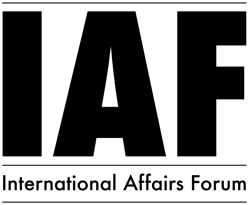| Fri. July 18, 2025 |
 |
|
||
|
||||
| ||||
 By Roger Helmer
By Roger Helmer
Far-reaching claims have been made for the EU's Emissions Trading Scheme (ETS). The First Phase of ETS ran from 2005 to 2007, while the second phase started in 2008 and is intended to run to 2012. Some oft-encountered examples of the claims made include:
The EU's ETS has provided a “life support system” for the Kyoto Protocol. It has provided a sign of political intent and proof of the practicality of international emissions trading through its internal operation and through the stimulation of demand in the Kyoto mechanisms.
If the ETS is a "life-support system" for Kyoto, it is difficult to imagine what a death-blow might look like. In fact the ETS has demonstrated that Kyoto cannot work, even in countries which claim to be committed to it, and even less so in those countries still doubtful about it. A number of studies, most notably by the UK think-tank Open Europe, have shown that Phase 1 of ETS was a total failure. It did not reduce Europe's CO2 emissions at all. They continued to rise somewhat faster than US emissions. The main reason for this was that many member-state governments, mindful of the needs of their industries and their economies, made very generous initial allocations of emissions rights. Indeed the total rights allocated exceeded the demand for such rights across the EU and across the period. Predictably, the market price for emission rights was highly volatile, but eventually trended to zero when the over-allocation was understood.
ETS did however have a number of remarkably negative effects. First, it created huge anomalies and distortions, for example between companies which had already invested in clean technology, and those which had not; and also between those whose size was just over the threshold for participation, and those just below. It created a huge and costly burden of administration for compliance and management of the system. Perhaps worst of all, it resulted in huge cash transfers between countries whose governments had allocated responsibly (like the UK), and those which had been profligate (like France and Germany). Some billion dollars a year for three years was transferred from the UK to continental companies under the scheme (which, remember, failed utterly to reduce emissions). There were equally perverse and unintended consequences for individual businesses. For example in the UK, the scheme cost Hospital Trusts millions of pounds, while major oil companies earned many millions from it – scarcely an effect the scheme's designers could have intended.
The ETS has the trappings of a market mechanism. Yet it is wholly artificial. The emissions rights traded have no intrinsic value, and the terms of participation are entirely artificial and set – and changed at whim – by bureaucrats. Given the increasing price of oil and other energy sources, it is arguable that governments have no need to add further disincentives for energy use. But if they do need to add further disincentives, then a carbon tax would be more transparent and more inclusive. It would avoid distortions and perverse incentives, and it would not be so subject to tinkering by bureaucrats and lobbyists.
The EU's ETS has shown that economic success and environmental integrity can go hand in hand.
On the contrary, it shows that political posturing, pandering to the prejudices of the chattering classes, and government interference in markets are – expectedly – futile and counter-productive. For the reasons outlined above, the ETS has done substantial economic damage, while achieving nothing whatever for the environment or for emissions control.
The scheme has proven the most tangible sign of developed-country leadership which may help break the “development deadlock” in future climate negotiations.
The most bizarre claim for ETS is that it provides an easy route, and therefore an incentive, for non-Kyoto countries like India and China to join in a global scheme. The Indians and the Chinese are smart, and they are not infected with the wishful thinking that obscures reality in Brussels. They can see perfectly well the damage which ETS is doing, and they are no doubt astonished and delighted in equal measure that their global competitors seem to have a death-wish. The most pathetic claim of the Green Lobby is that we in the West must set an example, which others will then follow. Even if ETS was working, China and India would be happy to see the rich world doing the heavy lifting on climate, perfectly delighted to let us get on with it. But given the failure of ETS, the last thing they would do is to join such a monstrous, bureaucratic scheme. There might be a better chance of getting them to join a global carbon tax scheme, though I wouldn't hold my breath.
Phase 2 of ETS (2008/2012) allows purchases of emissions rights from third countries against their measures to reduce pollution. This is wide open to misrepresentation and downright fraud. A recent BBC investigation turned up numerous examples of companies, for example in India, claiming credits for measures they would have taken anyway (in the jargon, a failure of "additionality"), as well as some cases of companies fraudulently setting up polluting businesses merely in order to be paid to take them down. If Phase 1 was failure, Phase 2 will be farce.
A growing number of scientists are now challenging the hypothesis of anthropogenic climate change. It may well be that mankind's emissions of CO2 are having very little effect on the environment. But while that point remains contentious, it is widely accepted that even if Kyoto were fully implemented (which it won't be), the effect on climate would be almost too small to measure. The effect on our economies, on the other hand, would be dramatic and negative. We will pay a high price for policies like ETS, which amount to little more than political grandstanding.
Roger Helmer is a British Conservative Member of the European parliament, and is a member of the parliament's Temporary Committee on Climate Change. His website can be found at www.rogerhelmer.com.
| Comments in Chronological order (0 total comments) | |
| Report Abuse |
| Contact Us | About Us | Donate | Terms & Conditions |
|
All Rights Reserved. Copyright 2002 - 2025